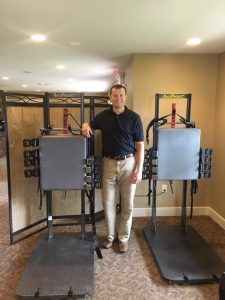Password Reset
/by BryanneBryan & Martin Rodgers, D.C.s’ add 2nd ATM2 Pro unit to clinic!
/0 Comments/in Uncategorized /by Courtney BuffyCongratulations to Dr.s’ Martin & Bryan Rodgers from Family Chiropractic of Lancaster County (PA) for adding their 2nd ATM2 Pro rehab unit to supplement the decompression practice. The ATM 2 Pro is a rehab device that retrains the CNS on a new muscle activation pattern. It will take painful movements and make them painless. It does this by restoring function and strengthening the muscles by doing pain free exercises. We wish the best to you and your patients! Thanks for your business!
Tampa Family Chiropractic adds 2nd KDT Neural-flex to their clinic!
/0 Comments/in Uncategorized /by Courtney BuffyAre minimal, superficial or sham acupuncture procedures acceptable as inert placebo controls? Lund I1, Lundeberg T. Author information
/0 Comments/in Uncategorized /by Lori KlinkDr. Kennedy comment: Here is one of the most intriguing and interesting discussions on acupuncture I’ve seen. Not only does it present an important challenge to the procedure but presents a great potential neurologic explanation. It’s important to note that recent studies utilizing electro-acupuncture during traction demonstrate subjective benefits vs. either alone.
Abstract:
Most controlled trials of acupuncture have used minimal, superficial, sham, or ‘placebo’ acupuncture. It has recently been demonstrated that light touch of the skin stimulates mechanoreceptors coupled to slow conducting unmyelinated (C) afferents resulting in activity in the insular region, but not in the somatosensory cortex. Activity in these C tactile afferents has been suggested to induce a ‘limbic touch’ response resulting in emotional and hormonal reactions. It is likely that, in many acupuncture studies, control procedures that are meant to be inert are in fact activating these C tactile afferents and consequently result in the alleviation of the affective component of pain. This could explain why control interventions are equally effective as acupuncture in alleviating pain conditions that are predominantly associated with affective components such as migraine or low back pain, but not those with a more pronounced sensory component, such as osteoarthritis of the knee or lateral epicondylalgia.


